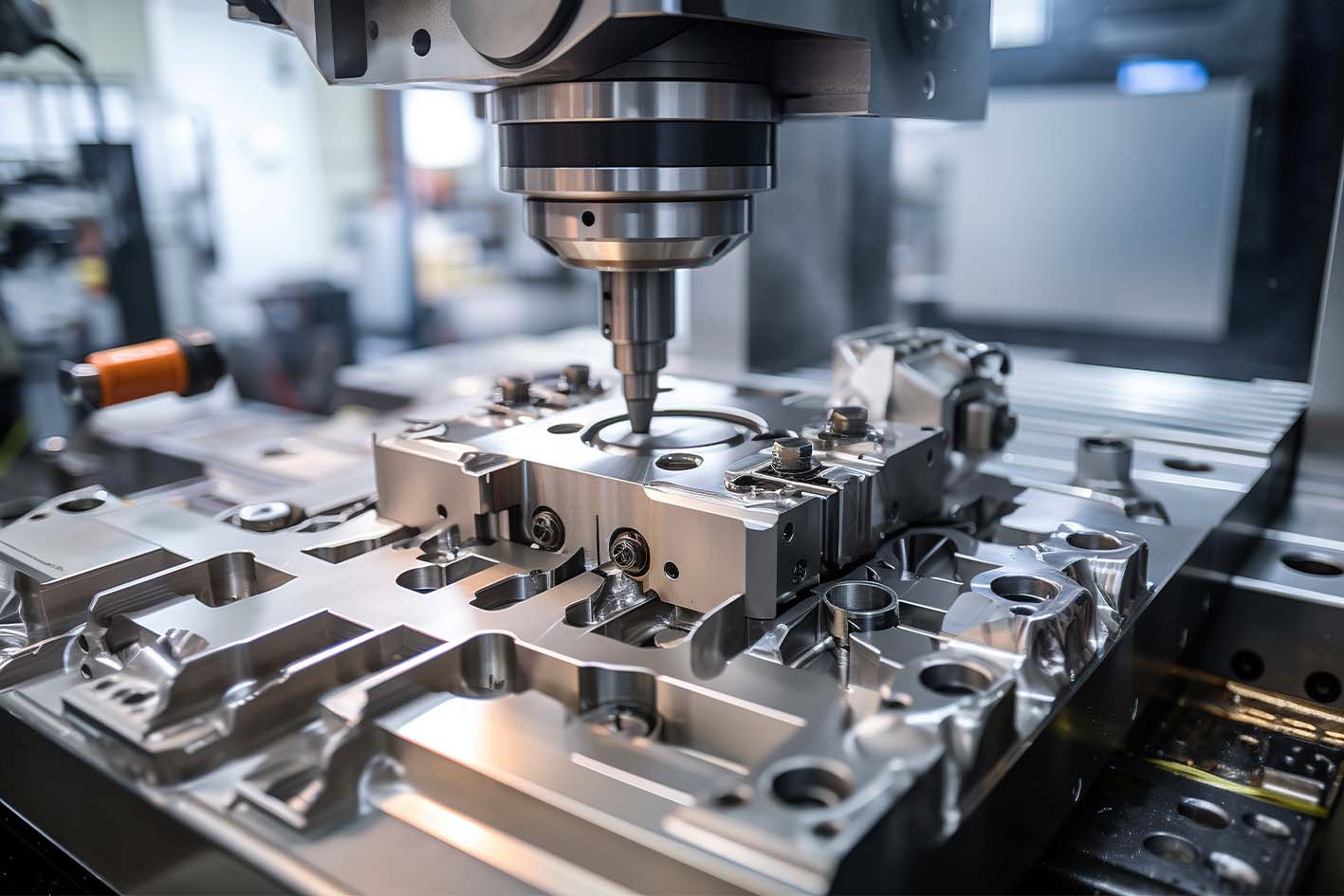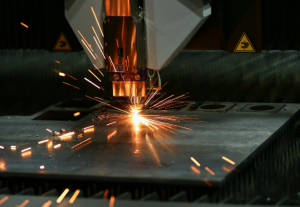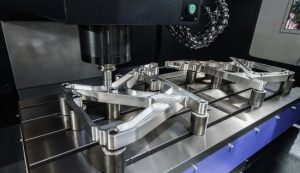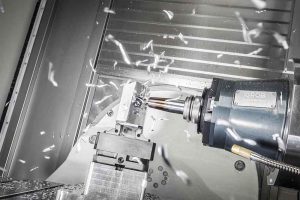3-axis CNC machining has a precision of 0.01 millimeters, suitable for simple geometries; 5-axis CNC machining achieves 0.005 millimeters, handles complex surfaces, and increases efficiency by 30-50%.
What is 3-Axis CNC Machining?
If you’ve ever been involved in manufacturing, you might have heard of 3-axis CNC machining. This is a type of computer numerical control technology widely used in various industrial manufacturing applications. Simply put, 3-axis CNC machining uses three main axes—the X-axis, Y-axis, and Z-axis—to move cutting tools and materials to create the desired shapes and designs.
First, let’s talk about precision. The error of 3-axis CNC machining can usually be controlled within 0.01 millimeters. This means you can use it to produce extremely fine and complex parts. For example, if you are manufacturing a batch of phone cases, each case must be exactly the same size, otherwise, they cannot be assembled. With 3-axis CNC machining, you can ensure that every part is consistent in size. According to data from the International Manufacturing Technology Show (IMTS), the precision error of 3-axis CNC machining is typically between 0.005 and 0.01 millimeters, depending on the brand and model of the machine.
Next is efficiency. Compared to traditional manual operations, 3-axis CNC machining can significantly increase production speed. On a typical industrial production line, a 3-axis CNC machine can complete the machining of hundreds of parts in an hour. According to data from Modern Machine Shop magazine, a medium-sized 3-axis CNC machine can process 200 to 300 parts per hour and can operate continuously for 24 hours, requiring only routine maintenance once a week. This results in a weekly operating time of 168 hours.
Of course, 3-axis CNC machining has its limitations. Due to having only three axes, it cannot handle parts that require more complex angles and surfaces. For example, if you need to machine a spherical part or some curved structures, a 3-axis CNC will fall short. In such cases, higher-level CNC technology, such as 5-axis CNC machining, is needed. According to the Digital Transformation in Manufacturing report, about 60% of complex parts require the use of 5-axis or more advanced CNC machining technologies.
The application scenarios for 3-axis CNC machining are quite broad. Whether it is automotive manufacturing, aerospace, or medical equipment, 3-axis CNC machining plays an important role. Car manufacturers like Tesla often use 3-axis CNC machining to ensure the high precision and consistency of parts in the production of electric vehicle components. For instance, the 3-axis CNC machines used in Tesla’s Model 3 production line can process 120 aluminum parts per hour. In the medical industry, this high-precision machining technology is indispensable in manufacturing surgical instruments and implants. According to the Medical Devices Market Report, about 70% of surgical instruments worldwide are manufactured using 3-axis CNC machining.
To further enhance your understanding, let’s look at a real-world case. The well-known American medical equipment company Medtronic used 3-axis CNC machining to produce a casing for a pacemaker. This casing required extremely high precision and a smooth surface to ensure no adverse reactions when implanted in the human body. Through 3-axis CNC machining, they successfully manufactured high-quality products that met all medical standards. According to the Medical Device Manufacturing Journal, Medtronic’s project produces about 100,000 pacemaker casings annually, with each casing taking about 15 minutes to machine.

The Unique Features of 5-Axis CNC Machining
Speaking of 5-axis CNC machining, it’s a high-tech marvel. It’s far more advanced than 3-axis CNC, like upgrading from elementary school to university. Why? Because 5-axis CNC not only has X, Y, and Z axes but also includes two rotational axes—A and B axes. It sounds complicated, but it’s incredibly powerful in practical applications.
First, let’s talk about machining capabilities. While 3-axis CNC can only work on three planes, 5-axis CNC can simultaneously process in five directions. This means it can handle highly complex geometries, such as curved parts and even parts with internal cavities. For example, if you need to machine a turbine blade, 3-axis CNC might require multiple repositionings, which is time-consuming and labor-intensive. On the other hand, 5-axis CNC can complete the task in one go, greatly improving production efficiency and precision.
Next, let’s discuss time costs. According to Modern Machine Shop magazine, the time required to machine complex parts using 5-axis CNC can be reduced by 30% to 50%. This means that if you previously needed 10 hours to complete a part using 3-axis CNC, now it only takes 5 to 7 hours. Isn’t this efficiency amazing? Moreover, with fewer repositioning steps, errors are also reduced, and the precision can reach 0.008 millimeters, which is essential in many high-precision industries.
In terms of economic benefits, the initial investment in a 5-axis CNC is indeed much higher than that of a 3-axis CNC. The price of a medium-sized 5-axis CNC equipment ranges from $500,000 to $1,000,000, while the price of a 3-axis CNC is between $200,000 and $500,000. However, you have to consider the long-term benefits it brings. According to the “Global Manufacturing Market Analysis,” companies using 5-axis CNCs typically recoup their investment within 2 to 3 years and see an annual production efficiency increase of at least 20%, which directly drives profit growth for the enterprise.
When it comes to specific application scenarios, aerospace and automotive manufacturing are the two most typical fields. Boeing uses 5-axis CNC machining technology extensively in the production of aircraft engine components. Aircraft engine components have complex shapes and require extremely high precision and consistency. Using 5-axis CNC, Boeing not only shortened the production cycle but also significantly improved product quality, ensuring that every component meets aviation standards. Boeing saves tens of millions of dollars annually through 5-axis CNC machining.
Let’s look at the medical industry. 5-axis CNC performs equally well in manufacturing complex medical devices and implants. For example, the manufacture of artificial joints requires extremely high surface smoothness and complex geometric shapes, all of which need to be achieved through 5-axis CNC machining. According to the “Medical Device Manufacturing Annual Report,” more than 60% of high-end medical device manufacturers worldwide rely on 5-axis CNC machining to ensure product precision and quality. Of the 2 million artificial joints produced globally each year, over 75% are processed using 5-axis CNC technology.
5-axis CNC is also widely used in the mold manufacturing industry. According to the “Mold Industry Report,” more than 40% of the molds produced globally each year are processed using 5-axis CNC technology. Especially in the automotive manufacturing field, using 5-axis CNC-processed molds can significantly improve production efficiency, reducing the production time of each set of molds by 20% to 30% and lowering production costs by 15% to 25%.
Finally, let’s talk about future trends. With continuous technological advancements, the application range of 5-axis CNC machining will become increasingly broad. The development of automation and intelligence makes 5-axis CNC equipment not only easier to operate but also capable of real-time monitoring and adjustment through intelligent systems, further improving machining efficiency and quality. According to the “Global Smart Manufacturing Report,” it is estimated that by 2025, the global 5-axis CNC market size will reach $12 billion, with a compound annual growth rate (CAGR) of over 8%.
The main differences between 3-axis and 5-axis CNC machining
Hey, today we will discuss about 3-axis and 5-axis CNC milling. I mean, you can tell from the names alone that 3-axis has three axes and 5-axis operates with five of them, but how different could it be right?
Let’s start with 3-axis CNC. 3 Axis CNC Machining: 3-axis cnc machining the most basic feature is three axes of X, Y and Z that can easily understand from it which moves left-right, forward-backward & up-down. This is common in things like plates and cubes. Machinery Manufacturing Monthly said: 3-axis CNC precision generally has a control of 0.01 mm, processing speed is about 20 meters per minute; It is relatively a low-cost technique, with an average price for 3-axis CNC equipment $200k to $500k. These machines can process around 100 to 200 parts per hour.
5 Axis CNC: Moreover, it can move up to five “axes of freedom,” X, Y and Z along with two rotations A and B; so that it is capable to cope with complex geometric shapes like curved surfaces or spherical parts. The parts with high accuracy requirements, such as aerospace and medical devices will be able to process more advanced cases which the precision of 5-axis CNC can reach the level of <0.005mm (according to Modern Manufacturing Technology magazine). Its manufacturing speed is lowering, and it can reach approximately 30 meters per minute. When it comes to price, 5-axis CNC machines run from $500-1.000 million so there is a substantial long-term return on investment despite the heightened initial cost of entry.
The 5-axis CNC is able to machine a complex part in hours for Boeing on aircraft engine components whereas 3-axis might take days. As a result, Boeing is saving tens of millions of dollars every year and enhances their manufacturing efficiency by 30-40%.
3-axis CNC machining is beneficial for some applications with lower precision requirements and being widely used in general mechanical parts production, woodworking carving engraving process as well as the plastic molds manufacturing etc. It is understood that, more than 60% of small and medium-sized manufacturing enterprises in the world are mainly produced by means of three-coordinate machining centers (also called ordinary CNC), especially for traditional processing industries. On the 5-axis side, it is mostly for high-precision, complexity machining (such as aerospace components and medical devices) or complex molds. In fact, data from the companies show that 5-axis CNC has been a popular choice in about 40% of high-end manufacturing applications by manufacturers worldwide and was an overbearing ratio to reach up to around 70% for aerospace uses.
Car manufacturing, especially making a complex mold with Five-axis CNC can save production time about 20-30% and reduce costs up to 15%-25%. As per the report published in Annual Report on Automotive Manufacturing, machined molds through 5-axis CNC reduce annual costs by many million dollars and cause production effectiveness to rise considerably as well.
One more attribute worth mentioning is ease of operation. This 3-axis CNC is designed with simplicity in mind and is perfect for beginners or small/mid-sized companies. In contrast, 5-axis CNC is a bit more advanced and calls for extensive programming abilities as well as experience. The Global Manufacturing Talent Report reveals that skilled technicians who are familiar with 5-axis CNC programming usually have an annual salary ranging from $100,000 to $150,000, which can be almost 30% – 50% higher than an average regular technician using a basic three-axis-based CNC system.
Also, a known difference is in the maintenance and operational costs spent. 3-axis CNC is simple to maintain and its annual maintenance cost varies between $5,000 – $10,000. As for 5-axis, because it is more complex, the annual maintenance cost may get as high as $20k-$30k.







